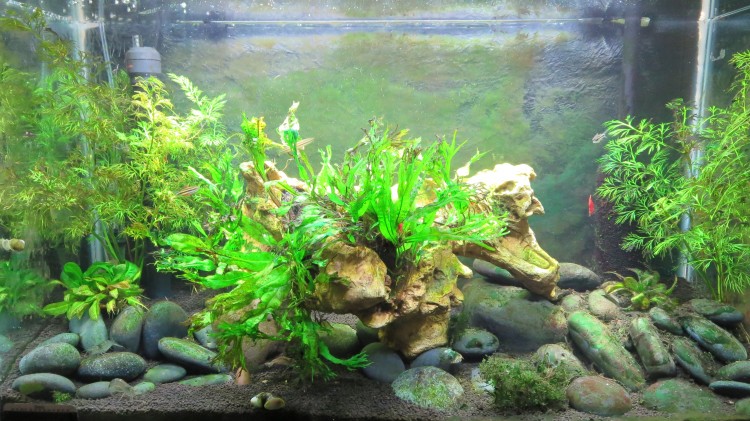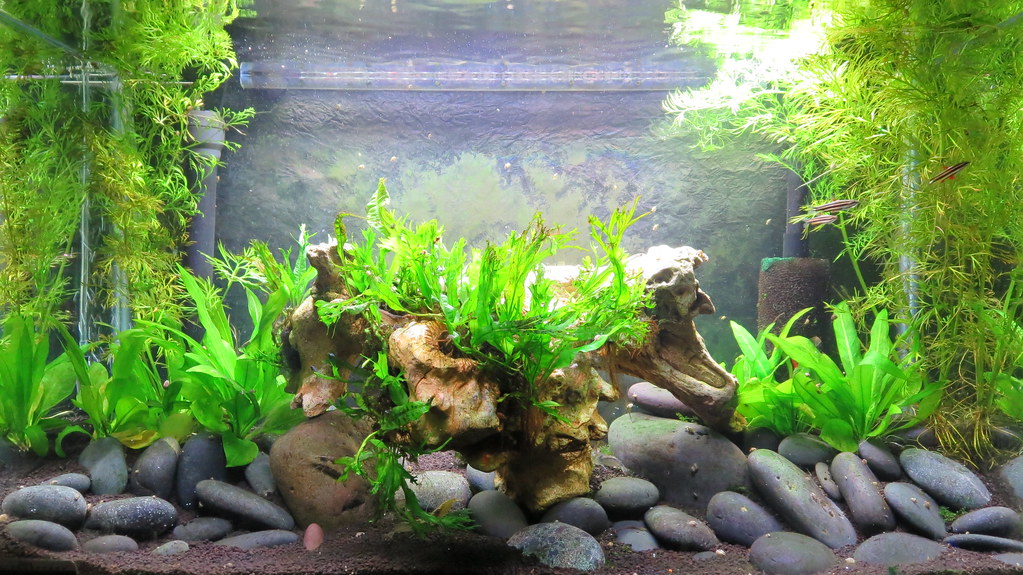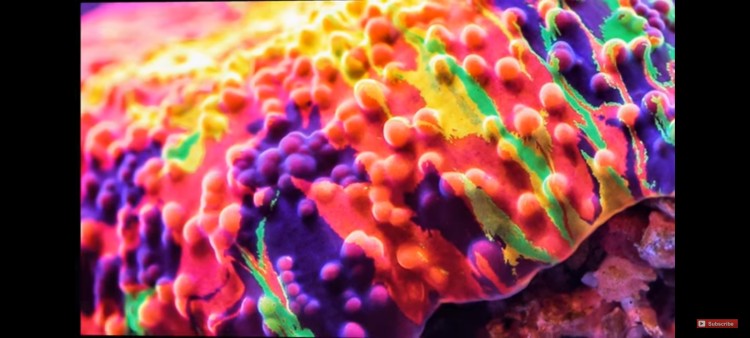Aquarium Substrates - How To Choose
- Aug 23, 2021
- Rita
- 1469 0 0

Are you setting up a new aquarium and wondering which substrate to use? There are so many options out there that it can be a bit overwhelming to choose. Don’t worry, we’ll break it down for you.
Things To Consider
Before you decide on a substrate, there are a few questions you should ask yourself. Every substrate doesn’t work for every tank after all. To save yourself some time, effort and money, consider the following:
- What type of tank will you be creating?
Different tanks require different substrates. The substrate that will work best for you will depend on if you want to create a tank with live plants, reefs, or just fish.
- What is your tank size?
The size of your tank will also play a role. It is possible to use two or more kinds of substrate as long as it doesn’t overwhelm your tank.

By George Farmer - http://www.aquascapingworld.com, CC BY-SA 4.0, https://commons.wikimedia.org/w/index.php?curid=37282753
- What types of fish will you be keeping?
Another factor will be the fish. Some fish require specific substrates to prevent injury while others use the substrate to perform their natural behaviors. To make sure you get the right substrate for your fish, do some research.
- How much maintenance are you willing to do?
Different kinds of substrate require you to different levels of maintenance. Which you ultimately decide on will partially depend on the maintenance you’re willing to do.
Now that you know a little about the things you need to consider beforehand, let’s take a look at the different kinds of substrates.
Types Of Aquarium Substrates
There are around 5 kinds of aquarium substrate choices. Here’s a short explanation of each.
Sand
Sand is a great substrate for tanks with bottom feeders that like to sift through the substrate. It is also very gentle which means fins and whiskers won’t get damaged and rubbed off. Sand also makes it easier to keep your tank clean. Dirt tends to sit on top of the sand instead, ready to be sucked up. Sand also comes in many colors which makes it simple to choose one that suits your vision for your tank.
Keep in mind that sand needs to be shifted often to prevent it from compacting. Compacted sand creates an anaerobic environment which leads to bacterial growth. The bacteria form a toxic gas that may affect your water quality in the long run.
Shifting the substrate during maintenance releases the gas before it can create problems. If you have fish species that like stirring up the sand, they will prevent gas formation for you.
Gravel
The term gravel includes a variety of substrates. Let’s take a look at the different kinds of aquarium gravel.
Crushed coral
Crushed coral is almost never used in tropical aquariums. It tends to raise the water pH and makes the water quite hard due to leaching calcium into it. This substrate is often used in brackish water tanks as well as African cichlid since these fish prefer hard water.
If you have a marine or reef tank, then this substrate is definitely a favorite.
Make sure to delicately sift through your substrate during maintenance and replace it often. This substrate tends to trap dirt due to being so porous which may lead to water quality problems later on.
Vermiculite
This substrate is excellent as a lower layer for a planted aquarium. It slowly releases nutrients over time and gives the plants something to root in. Keep in mind that vermiculite tends to compact over time so mix it with laterite to keep it porous.
You can cap your vermiculite with a different substrate if you don’t like the look of it in your tank.

By mobile_gnome
Aragonite
Aragonite, just like crushed coral, isn’t used in tropical tanks very often. It also raises the pH and tends to increase water hardness. This substrate is also very porous which isn’t ideal for keeping water quality pristine.
It is definitely a favorite when it comes to reef and marine tanks, however. This substrate can often be found mixed with crushed coral.
Laterite
Laterite is an excellent porous grow medium for plants. It doesn’t release the nutrients into the water but allows rooted plants to access it instead. You can mix this substrate with vermiculite to create a substrate with everything your planted tank requires.
Other Options
If you don’t like the maintenance that comes with having substrate in your tank or you don’t want the hassle of maintaining the soil your plants need to grow in, you can also try the following:
Bare bottom tanks
These tanks don’t have any substrate in them. This method is usually used in breeder or hospital tanks to make it simple to keep the tank clean and the water quality tops.
Root tabs
It is possible to grow plants in a tank without a substrate. It is also possible to grow them in a sterile substrate. The thing is, you will need to do a bit more to keep your plants healthy this way. Plants require certain nutrients to stay alive. If you aren’t providing a nutrient-rich substrate, you will have to supplement with root tabs to keep your plants thriving.
If you’ll be growing plants in a bare tank, simply choose floating plants that don’t require rooting or plants like java ferns that prefer to grow on ornaments instead.
DIY options
If you want a planted aquarium but the special aquarium soil is just a little too far out of budget, you can always create your own. Simply get yourself a good quality potting soil. Before putting the soil in your tank, make sure to rinse it thoroughly in a bucket.
If you can let it stand and replace the water every day, the results will be even better. Once your soil is prepared after a day or three, create a layer of about one inch (2.5cm) at the bottom of your tank. Plant all your plants that require rooting and cap the potting soil with a sterile aquarium substrate of your choice.
Capping the potting soil will prevent it from floating around your tank and it looks much better.

By mobile_gnome
Substrates To Avoid
There are some substrates that mean well but just don’t do your tank any good. Make sure to avoid the following if you want to keep your tank healthy:
Glass Gravel
Glass gravel may look great in some tanks, but it also messes with your aquarium lighting. Glass tends to reflect the light which may confuse and stress any fish in your tank. If you have a planted tank only, glass gravel shouldn’t matter too much, but if you have a tank with fish in it, take their health into consideration before getting glass gravel
Any Substrate Directly From Nature
It might seem like a great idea to just grab some soil from your garden. You may even think sand from the beach will look great in your tank. Unfortunately, these substrates aren’t sterile.
They often contain loads of bacteria and other lifeforms that will die and affect the water quality in your tank. You can also inadvertently bring in diseases that will affect the health of your fish and plants.
Artificially Stained Gravel
Gravel that was artificially colored is also a no-no. These gravels will often stain your water over time and can potentially poison your fish. The staining also tends to come off exposing the underlying color. This can look terrible over time.
As you can see, all kinds of aquarium substrates have different good and bad qualities. Just because one substrate works for someone else, doesn’t mean it will work for you. Make sure to evaluate what you want from your tank before investing in aquarium substrate.







About author